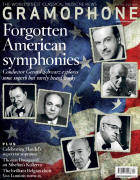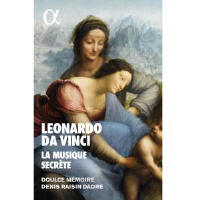Texte paru dans: / Appeared in: |
|
|
Outil de traduction (Très approximatif) |
|
|
Reviewer:
Edward Breen This new album and book from Renaissance specialists Doulce Mémoire marks 500 years since the death of Leonardo da Vinci (1452-1519). More than a thoughtful programme of music from half a millennium ago, this personal journey through the Louvre’s Leonardo collection is the brainchild of director Denis Raisin Dadre, who has matched paintings to exact musical contemporaries. Sparked by careful research and fruitful obsessions, the resulting performances – recorded in front of large reproductions of each artwork – are deliciously atmospheric. The matchmaking process itself is fascinating. For example, Leonardo was praised for his abilities on the lira da braccio, larger and flatter-bridged than the fiddle and boasting two drone strings. Dadre describes it as making a halo of sound which he likens to Leonardo’s sfumato technique, the layers of glaze used to create his particular misty effects. When used to accompany the upper voice of Frater Petrus’s Ave Maria the lira creates a sublime, diffuse mesh of sound in which the clear but gentle voice of soprano Clara Coutouly is perfectly embedded. This is twinned with Leonardo’s The Annunciation (1473-75) and, as with all the pictures considered, there is a handsome reproduction in the glossy accompanying book with a fascinating insight to Dadre’s musical matchmaking. Unsurprisingly for a programme focused on music-making in late 15th-century Italy, this is a selection dominated by oltremontani, and this Franco-Flemish influence is crowned by Leonardo’s portrait of a musician now thought to be Josquin (1450-1521). This begets one of my favourite tracks on the disc: Josquin’s Planxit autem David has a Hilliard Ensemble-esque hue thanks to the richness of the countertenor Marnix de Cat. As the programme unfolds from deft basse danses to Marchetto Cara’s sprightly Tante volte si si si we hear an impressive and persuasive attempt to uncover Leonardo’s subliminal music. The Mona Lisa is a high point: Per sonetti (1505) from a collection published by Petrucci generates another charming performance from Clara Coutouly to the luminous sound of Baptiste Romain’s lira da braccio. |
|




